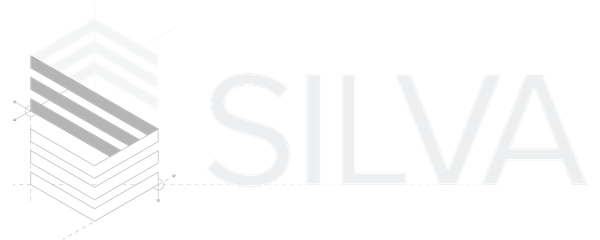
Advantages of MAX FRANK dowels
What makes MAX FRANK Egcodorn® shear force dowels different and what advantages do they have?
A shear force dowel system is used for the transmission of shear forces which occur in expansion joints in concrete structures to decouple components and avoid stress cracks. This means a smaller amount of surface reinforcement is necessary. The forces perpendicular to the direction of movement are absorbed by dowel connections.
Traditionally, builders have used corbels and double columns to manage shear forces. However, using corbels and double columns requires more concrete and steel reinforcement, adding to building costs in terms of materials, labour, and time.
The diagram below shows the advantages of a dowel connection compared to conventional approaches:

Shear force dowel systems aren’t new
Shear force dowel systems have been used around the world for 30 to 40 years. One of the reasons traditional approaches continue to be used is that some builders and engineers are very experienced in using them and moving to a dowel system will mean they need to learn a new approach. While there would be an initial cost and effort for a builder or engineer to do this the ongoing savings and other advantages make it worthwhile.
Types of dowels
One type is only longitudinally moveable while the other type allows displacement on both the longitudinal and lateral axes. This article looks at the features of the longitudinally moveable type but most of the features described apply to both types.
What makes MAX FRANK dowel systems different?
There are several features which offer advantages in terms of ease of installation, design, and efficiency. Let’s look at each of them.
High-strength steel dowel
Most new buildings now have a design life span of around 100 years, so the system must be resistant to damage caused by corrosion. With this in mind, MAX FRANK has designed a core-jacket system which combines the outstanding mechanical properties of a high-strength loadbearing dowel core with the excellent corrosion protection of a stainless-steel jacket (corrosion resistance class III). During the mechanical processing the surface is tempered, which leads to particularly favourable sliding properties.
The chart below shows how this type of dowel performs better than a solid stainless-steel dowel.

The story behind the creation of this jacketed dowel is an interesting one and demonstrates the innovative nature of MAX FRANK. They realised that while stainless steel was necessary for its corrosion resistance it was expensive and not as strong as high-strength steel. They realised a jacketed system would solve both of these problems but for it to work they had to invest a lot of time and money in developing a process for making them. Using their advanced engineering and fabrication expertise they designed and built a machine capable of generating the force required to mechanically fuse the stainless-steel jacket to the steel core. It would have been easier just to continue making a more expensive solid stainless-steel dowel and pass the cost onto the customer but by investing in product development they’ve managed to reduce cost and increase performance.
The design of the jacketed dowel is shown below:

A single dowel system
Some other systems use two dowels, but a single dowel system is easier and quicker for builders to install because it’s lighter and less cumbersome. This in turn reduces the chances of the builder making an error with all the expensive repercussions that would entail.
Wide anchor points
This makes the system less susceptible to punchout as it helps distribute the load over a larger area.
Reinforcement added to the anchor point
Another small but quite important difference is the addition of reinforcement to the anchor point. In other systems the builder must add extra reinforcement, this takes longer, costs more and increases the risk of something going wrong.
Nevertheless, a small amount of additional reinforcement needs to be installed in order to distribute the applied load successfully into the adjacent building components. This additional reinforcement anyhow is not larger than with other products, as the following table and sketch show:


The above-mentioned additional reinforcement is sufficient, when all other design proofs, such as shear force capacity of the concrete slab and punching have been successfully fulfilled.
The image below shows the open and short anchorage body, which is easy to install even in small geometries.

Unique ring load transferring
At the point where the dowel enters the slab the load is very high which can cause damage to the concrete. In extreme cases this could lead to failure and then the need for costly rectification work. To help avoid this happening, the system has been designed with a ring around this point which helps distribute the load back into the concrete slab.
The image below demonstrates this:

Modular system provides more economical material utilisation
With a wide range of different systems available a modular approach can be taken. This means less over-engineering in the interests of simplicity. Instead, a builder may be able to use more but smaller components to achieve the same load bearing capability as would be achieved with a larger system. This could allow a builder to use less concrete and reinforcement and still manage high loads with small component thicknesses. The system can still manage large joint widths of up to 80 mm.
The image below shows how the dowel connections can be configured to suit the respective conditions.

Advanced software can assist with getting the right solution
Free Egcodorn® software is available to help engineers with design. The software has been enhanced recently which makes it very intuitive and easy to use. It can suggest all available solution variants, and these can be sorted according to cost criteria. Another clever feature is that suggested dowel positions can be moved ‘by hand’. MAX FRANK also has technical consultants available who can help with any design or product questions.

All these smart design features are a testament to the team at MAX FRANK and their responsiveness and concern about doing the best they possibly can for their customers. They certainly don’t rest on their laurels.
Smart design doesn’t have to cost more – it can ultimately cost less.
For further information about MAX FRANK products please contact Scott Tester on: 0427 036 525
About MAX FRANK
MAX FRANK was founded in Germany in 1962 and quickly became a leading supplier to the construction industry. To this day, most of their products are still made at their factories in Germany. MAX FRANK’s values are friendship, trust, tolerance, and honesty. They have 850 employees around the world and support projects in more than 50 countries.
More information about the advantages of Egcodorn® shear force dowel systems can be found here:
All images in this article are property and copyright of MAX FRANK.



